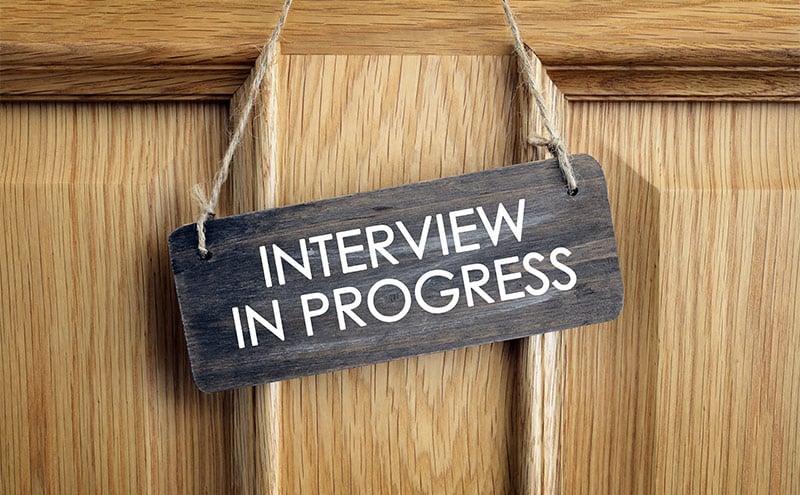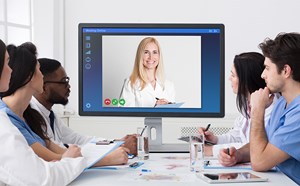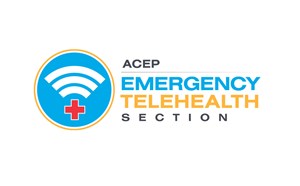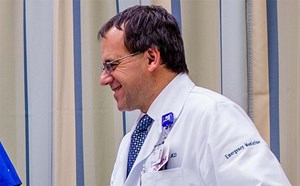
Interview with Dr Chris Davis
Tell us about yourself. Where did you grow up? Where did you train? How did you get lucky enough to end up in Colorado?
I grew up mostly in New England. I was a military brat and so moved all over as a young kid. When my father retired, we settled in New Hampshire. I worked for the Appalachian Mountain Club as an EMT that responded to medical emergencies. That was my first exposure to medicine. After undergraduate studies, my girlfriend (soon to be wife) and I were looking for a town with a good medical school and law school with some “green on the map” and settled in Colorado. I ended up going to University of CO for medical school finishing in 2013 and stayed for my emergency residency at Denver Health. Then I stayed for a Wilderness Fellowship, joined the faculty, became director of telemedicine and I am now doing more training in Innovation and receiving my MBA.
It looks like you did some special training in London. Tell us about that.
As part of my fellowship, me and my co-fellow went to the London School of Tropical Medicine and Hygiene and received my DTMH. I was interested in tackling delivery of medical care in austere environments. That is the overlap between wilderness medicine and global health, i.e. how do we deliver efficacious care at a reasonable cost? Some may wonder why London for tropical medicine but anyone familiar with colonial history will realize the connection.
When did you first become interested in telehealth?
My door of entry into telehealth came in 2014 when we were doing medical support work in Antarctica through telemedicine for an excavation team that was trying to dig a plane out of glacier the winter before. We then made a bid to give medical support for the NSF. At that time, it was mainly via satellite phone and asynchronous images supporting medical teams in the middle of nowhere.
Who is your typical telehealth patient? Were there any surprises who accesses telehealth?
We were pretty surprised about the demographic that accesses telehealth. After about 2500 patients, we realized that the “average” patient is a 40-year-old female. It would be easy to fall into the heuristic that the stereotypical telehealth patient is going to be a 20 year something millennial who doesn’t want to see their doctor. But this is not the case. Our oldest patient so far is 84. The other surprising demographic is that our patients are 3:1 female to male. We’re not sure why this is. Perhaps because females frequently play multiple roles and seek our care due to convenience.
Are there any plans to provide telehealth consults to other providers? For example: triage, ED, ICU, paramedics?
UC Health is unusual in the sense that we have a foot in the door in the fee-for-service world and a foot in the door in the population health world. We are certainly not like a Kaiser where investment in telehealth makes all the sense in the world. We initially set up in the virtual urgent care realm just because that is what payors are paying for right now. But the trick is to develop other capabilities so when the payment and regulatory environment catches up we can deploy very quickly. We are developing community paramedic models for hospital discharges, internal hospital telehealth models, specialist consults, virtual triage models. It is very difficult right now for patients to know where to get care. Virtual triage may have a strong business case in the future.
In your experience, who makes a good virtualist?
We’ll use the virtual urgent care as an example. First, you need to be a good clinician making decisions without a whole lot of data. Surprisingly, it is not so much about how good you are with technology. The system is pretty stable and easy to use so you don’t necessarily need to be good at technology. It has more to do with your comfort with the unknown and how open you are to new platforms and models of care.
Early on in the development of the telehealth program at UC Health, you had to make the decision to buy an off-the-shelf product or build your own platform. Can you tell us how you made that decision?
We were close to signing with a third-party supplier to host our virtual care platform. A lot of suppliers also offer the option to include third-party providers as part of the package. We, however, wanted our own doctors providing the care. We like our own docs and honestly, feel that we could provide better care and it would be a differentiator in the market.
It was also about patient experience and provider experience. UC Health has a remarkable milieu where all our hospitals and clinics are on the same version of EPIC. This is actually very unusual. So, our ability to push and pull data is quite remarkable here. We wanted to build our platform within EPIC. We wanted to stay in the native EHR where patient data was in one place and providers could integrate the telehealth visit in a similar workflow to their face to face visit.
The long and short of it was that the time and cost of using a third party to integrate our telehealth platform into EPIC was enormous. We had talented folks on campus and we wanted to own the data, process, design and innovation. So, we went that route.
Where do you see as some of the biggest trends in telehealth in the next 5 years? What are some of the innovative things your department is doing?
I think there are probably 3-4 big trends. First, there will be the continued pressures of cost containment and expectations of better care. Telehealth will undoubtedly be part of the solution. We will see more alternative payment models that support telehealth. Second, we will see changes in regulation for licensing requirements for providers i.e. across state lines. Next, we will see a huge growth in outpatient monitoring. We will see biopatches and sensors of all sorts that will measure and transmit patient data. I expect a large tech company such as Google or Amazon will disrupt the market in the area of medical devices and the internet of things (IoT). Finally, the evolution of the internet including 5G will provide better data. And this will make predictive analytics through use of big data, AI, machine learning become a bigger part of the digital health landscape. AR and VR will be used more and more to queue relevant data to the provider to provide more efficient care.
What are some things that need to happen before the promise of telehealth gets realized?
The piece that is truly missing is the right financial incentives. The whole payment model, regulatory piece. Until we have true incentives and models where providers are paid appropriately, you will not see widespread adoption.
I love this analogy. We now have tele-stroke and tele-dermatology. We used to have tele-radiology. We don’t have tele-radiology anymore. It is just radiology. That is the future of medicine where medicine is just practiced in both FTF and virtual realms.
What would you say to someone who wants to make an academic career in telehealth?
In terms of timing, this is a very, very good time to be involved in telehealth. Health systems are craving clinical leadership in this space. It is absolutely a great time to be involved in telehealth. It is on the cusp of a huge breakthrough. However, as is true with any field in academic medicine, pairing with a mentor is a huge to key to success. Unfortunately, since telehealth is so young, there aren’t a whole lot of mentors out there. I was lucky because my chairman was very into telehealth and I sort of got pulled into his orbit.
Medical Director, Virtual Health at the University of Colorado (UCHealth)



